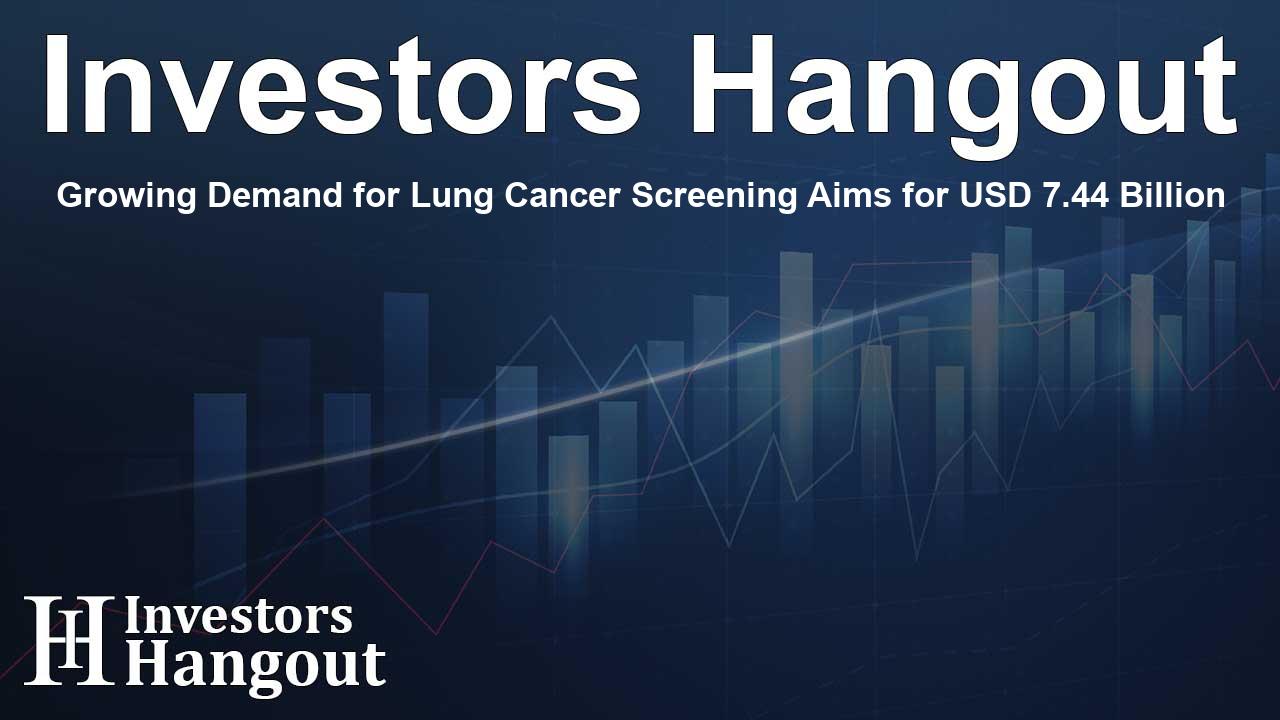Growing Demand for Lung Cancer Screening Aims for USD 7.44 Billion

Growth Projections in the Lung Cancer Screening Market
The lung cancer screening market is experiencing a significant transformation, with current estimates placing its value at USD 3.66 billion as of 2024. Projections indicate that this figure will reach an impressive USD 7.44 billion by the year 2032. This remarkable growth translates to a compound annual growth rate (CAGR) of 9.32% between 2025 and 2032. The primary catalysts for this surge include the rise in lung cancer cases, increased adoption of advanced screening techniques, and heightened public awareness.
Influential Factors Fuelling Market Growth
According to industry analysis, a multitude of factors is driving the expansion of the lung cancer screening market. One of the main elements is the alarming rise in lung cancer cases worldwide, drawing attention from healthcare providers and policymakers alike. Additionally, advancements in screening technologies are making early detection more feasible and effective. The introduction of low-dose computed tomography (LDCT) has fundamentally changed the landscape of lung cancer diagnostics, propelling the market forward.
Government Initiatives and Public Awareness
Government policies promoting awareness about the importance of early detection in lung cancer have played a significant role in accelerating market growth. With various initiatives aimed at boosting screening rates, healthcare systems are encouraging eligible populations to participate in regular check-ups. Such movements are supported by evidence highlighting the potential for improved outcomes through early diagnosis.
Segment Analysis of the Market
Within the lung cancer screening market, the low-dose computed tomography (LDCT) segment has emerged as a frontrunner with a market share of 61.2% as of 2024. This success can be attributed to its high accuracy rates and non-invasive characteristics. Additionally, the U.S. Preventive Services Task Force (USPSTF) and other health organizations have endorsed LDCT, enhancing its credibility and acceptance.
Types of Lung Cancer and Screening Demand
When examining cancer types, the non-small cell lung cancer (NSCLC) segment continues to dominate the market. Accounting for approximately 85% of lung cancer cases, the slow progression of NSCLC allows for early detection through screening initiatives. Furthermore, innovations in targeted therapies for NSCLC are also boosting the demand for comprehensive screening processes.
Age Groups and Market Dynamics
The lung cancer screening market has also shown varying demand across different age demographics. The 60-69 age group is particularly noteworthy, as this segment possesses the highest prevalence of lung cancer. This correlation is largely due to the long-term smoking habits or higher exposure to carcinogens among individuals in this group. As a result, many healthcare guidelines prioritize this age range for low-dose CT screenings.
Regional Highlights and Market Leaders
North America currently leads the lung cancer screening market with a commanding 40.3% share in 2024. This strong position is attributed to a well-established healthcare system, widespread acceptance of advanced screening methods such as LDCT, and positive reimbursement scenarios. Meanwhile, efforts made by institutions like the USPSTF have significantly improved screening rates, particularly within high-risk populations.
Conversely, the Asia-Pacific region is on track to become the fastest-growing market segment. Countries like China, India, and Japan are ramping up their cancer screening initiatives and improving access to advanced technologies. Increased healthcare spending in these nations is crucial in addressing the rising incidence of lung cancer.
Key Players in Lung Cancer Screening
This burgeoning market has caught the attention of several key players, enhancing competition and innovations in technologies and services. Prominent companies involved in lung cancer screening include GE HealthCare, Siemens Healthineers, and Philips Healthcare, among others. These organizations are at the forefront in developing cutting-edge diagnostic solutions that aim to improve lung cancer detection and treatment outcomes.
Conclusion: A Look Ahead
As the lung cancer screening market continues to expand, stakeholders must stay vigilant regarding technological advancements, regulatory updates, and market dynamics. With the ongoing evolution in healthcare practices and methods, maintaining a proactive approach will be critical. Overall, the future looks promising for the lung cancer screening market as it edges closer to reaching its ambitious growth targets.
Frequently Asked Questions
What is the projected market size for lung cancer screening by 2032?
The lung cancer screening market is expected to reach USD 7.44 billion by 2032.
What factors are driving the growth of the lung cancer screening market?
The growth is driven by the increasing prevalence of lung cancer, heightened public awareness, and advancements in technology.
Which age group shows the highest demand for lung cancer screenings?
The 60-69 age group has the highest demand due to the increased prevalence of lung cancer among older adults.
Why is LDCT preferred for lung cancer screening?
LDCT is preferred for its high accuracy and non-invasive nature, endorsed by health organizations.
Which regions are leading in the lung cancer screening market?
North America currently leads the market, while the Asia-Pacific region is projected to grow the fastest.
About The Author
Contact Hannah Lewis privately here. Or send an email with ATTN: Hannah Lewis as the subject to contact@investorshangout.com.
About Investors Hangout
Investors Hangout is a leading online stock forum for financial discussion and learning, offering a wide range of free tools and resources. It draws in traders of all levels, who exchange market knowledge, investigate trading tactics, and keep an eye on industry developments in real time. Featuring financial articles, stock message boards, quotes, charts, company profiles, and live news updates. Through cooperative learning and a wealth of informational resources, it helps users from novices creating their first portfolios to experts honing their techniques. Join Investors Hangout today: https://investorshangout.com/
The content of this article is based on factual, publicly available information and does not represent legal, financial, or investment advice. Investors Hangout does not offer financial advice, and the author is not a licensed financial advisor. Consult a qualified advisor before making any financial or investment decisions based on this article. This article should not be considered advice to purchase, sell, or hold any securities or other investments. If any of the material provided here is inaccurate, please contact us for corrections.
